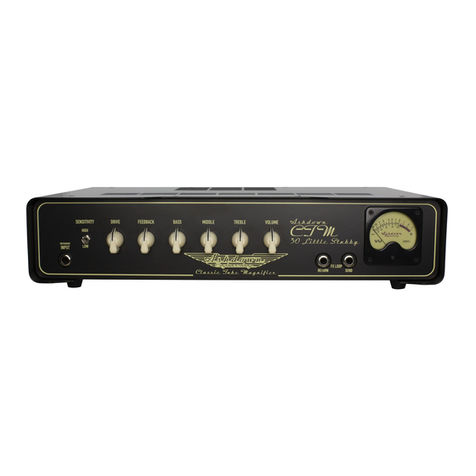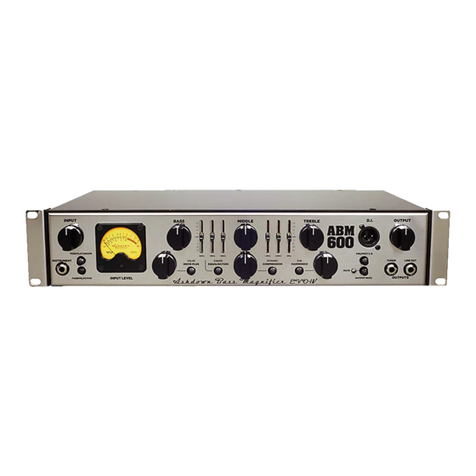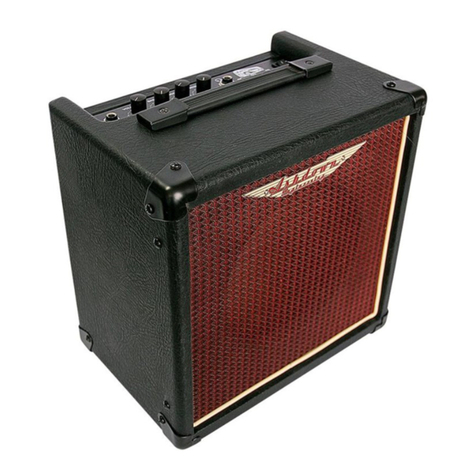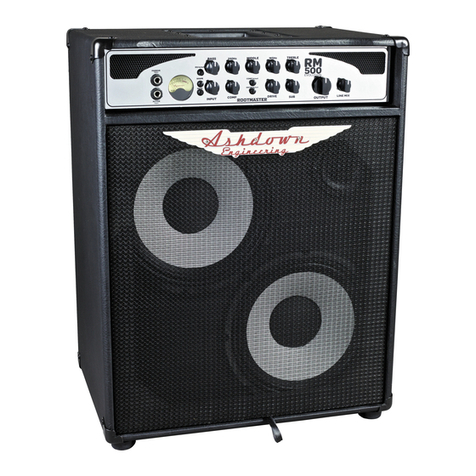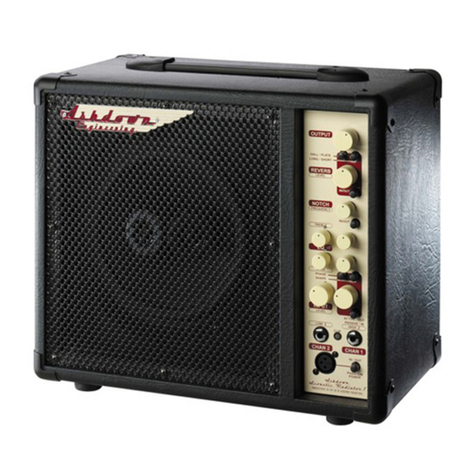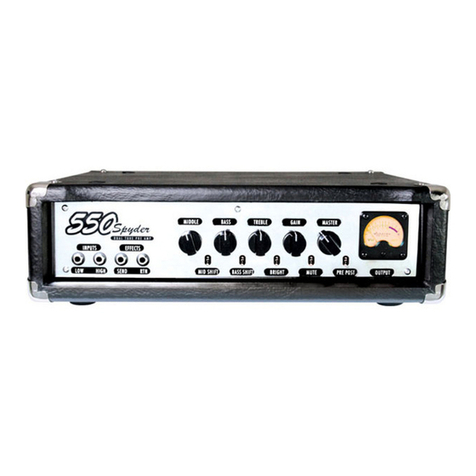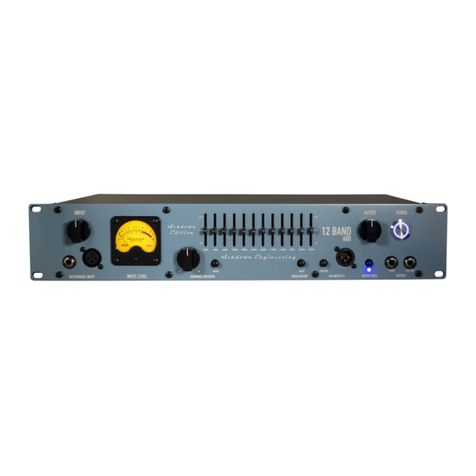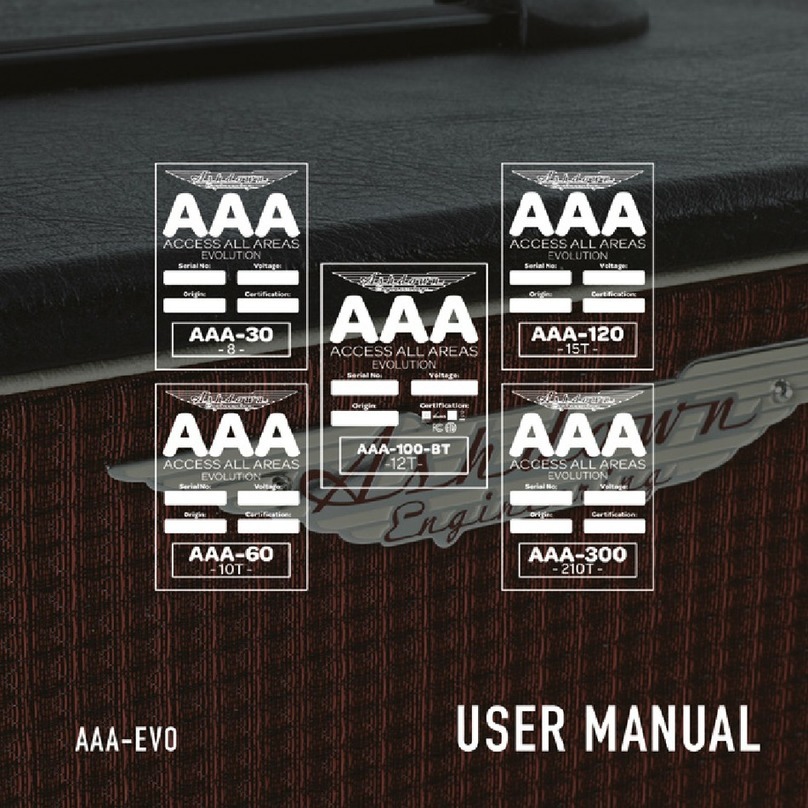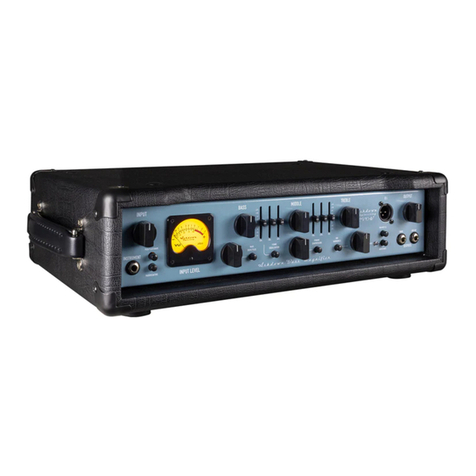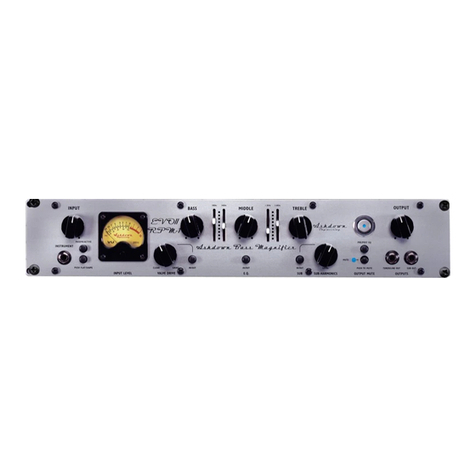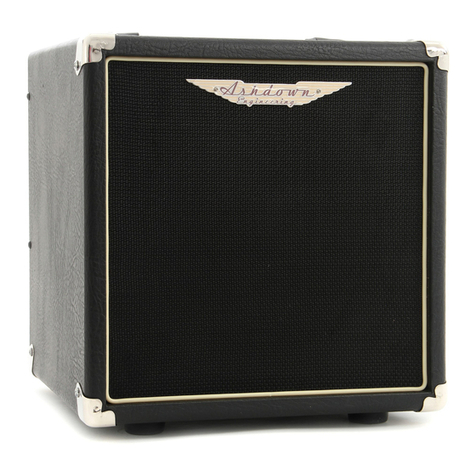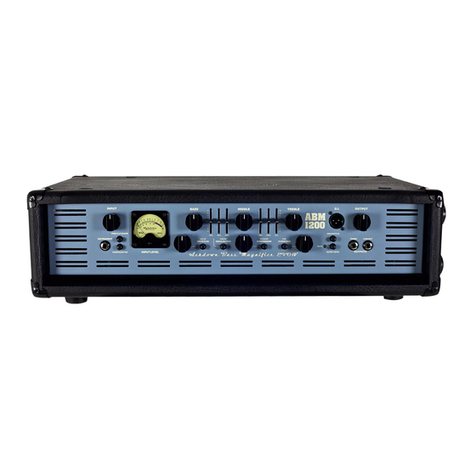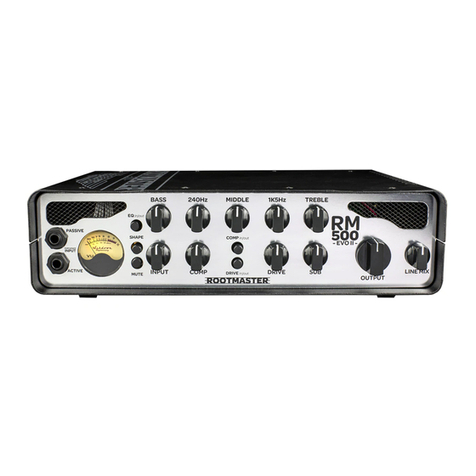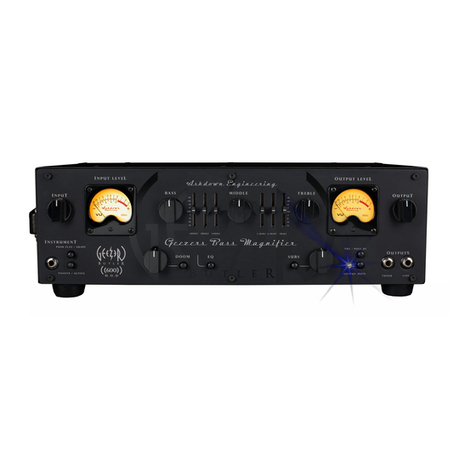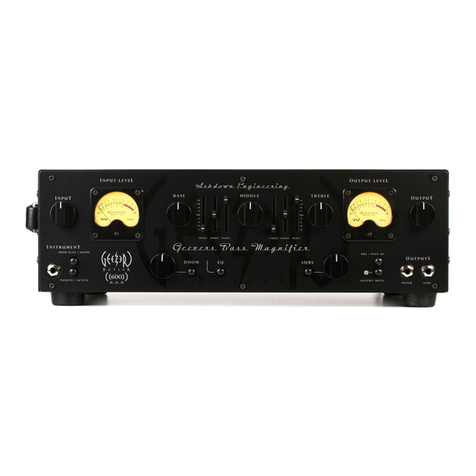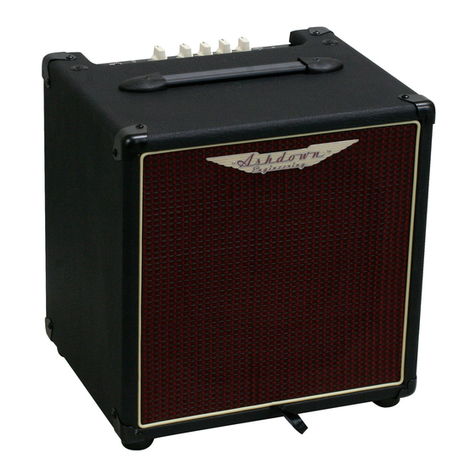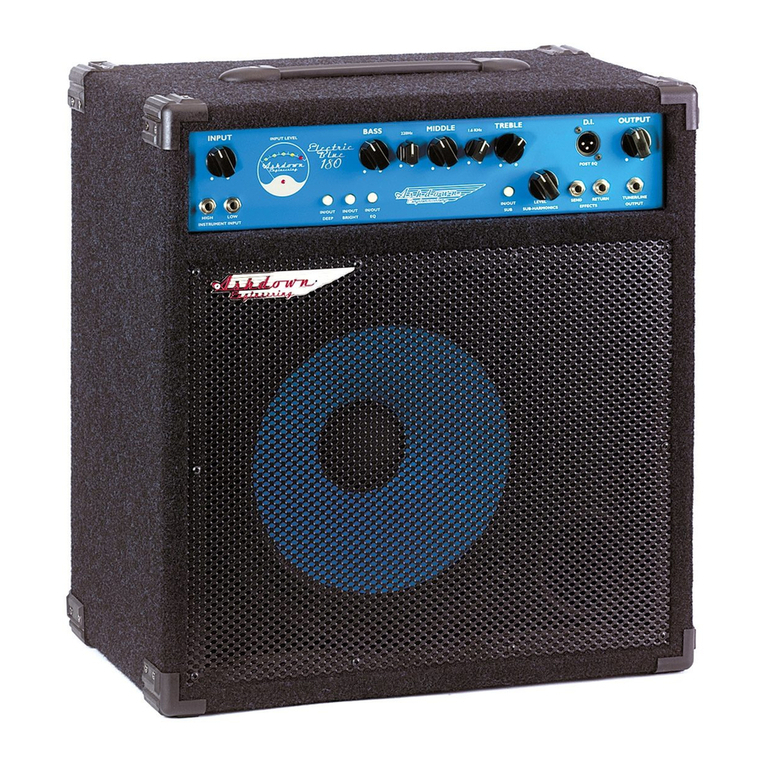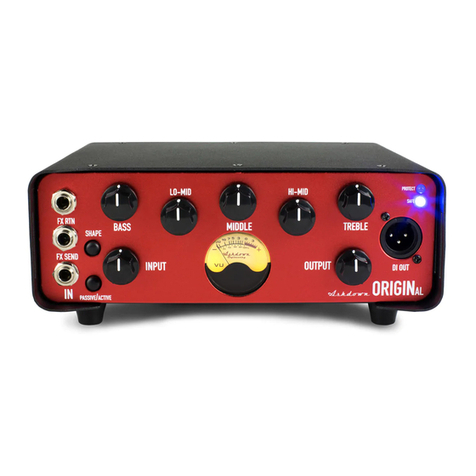Front Pane Faci ities
INPUTS - There is a single instrument input
provided linked to a PASSIVE/ACTIVE selector
switch. The Passive input (switch out) is high
sensitivity and also high impedance to suit
the output from PASSIVE basses. The Active
input (switch in) is low sensitivity and lower
impedance to suit the output from ACTIVE
basses.
INPUT CONTROL - The INPUT control sets
the signal level through the preamp in
conjunction with the INPUT LEVEL VU Meter.
This is adjusted to give a reading of 0VU on
the meter for average playing dynamics with
occasional peaks into the red region. Please
note that the setting of this may have to be
re-adjusted after modification of the EQ
controls.
PUSH FLAT / SHAPE - With this button in its
OUT position a fixed E.Q. is superimposed on
the preamp to give a bright but punchy
character to the sound. Pushing this button
IN returns the preamp to a Flat frequency
response.
This function may also be controlled from a
footswitch. For the footswitch to operate this
button must be in its OUT position.
AL E DRI E - This routes the signal either
through a clean Solid State amplification
section (control on zero) or through a Dual
Triode Tube amplification/overdrive section
in order to add either tonal character i.e.
warmth with the control set at 9 o’clock, a
slight edge in the sound at 12 0’clock
through to an increasing degree of Tube
distortion/overdrive as the control is
advanced to maximum.
A Mix of these two amplification sections can
be achieved with this control.
N.B. The degree of tube distortion provided
by this control will also depend on the
setting of the INPUT control.
AL E DRI E IN/OUT - This push button
switches the valve drive section IN or OUT.
This function may also be controlled from the
Ashdown 4 way footswitch. For the
footswitch to operate this button must be in
its OUT position.
E.Q. IN / OUT - This push button switches the
Equalisation section IN or OUT i.e. the Bass,
Middle and Treble controls plus the two sets
of sliders placed between each of these.
This function may also be controlled from the
Ashdown 4 way footswitch. For the
footswitch to operate this button must be in
its OUT position.
EQUALISATION - This consists of BASS,
MIDDLE and TREBLE controls with two sliders
placed between each control. This can be
used in a number of ways:
Firstly as a very simple Bass, Middle and
Treble tone control section as found on older
traditional amplifiers. This is done by leaving
the two sets of sliders interposed between
these controls set in their centre positions
and using only the BASS, MIDDLE and TREBLE
controls to alter the overall tone.
Secondly, if more control is required then the
sliders can also be used to tailor the E.Q. in
the regions between the main tone controls.
This provides a very versatile Equalisation
section, it is simple to understand and
operate, yet provides a wide degree of
variation. It retains the simplicity of a three-
control tone section but provides the
flexibility of a graphic equaliser.
COMPRESSION – Adding a small amount of
compression gives a fat bottom end to the
sound and allows a greater volume of
amplification to be used without the playing
peaks distorting the amplifiers output stage.
You will also find that this will add definition
to your playing bringing out notes within a
run more clearly as it evens out the dynamics
of your playing.
A large amount of compression can be used
as an effect but it will tend to reduce the
dynamics in your playing to such an extent
that the volume of the note will be the same
no matter how hard or soft you hit the string.
Compression also adds sustain to notes
making them longer before they die away.
The Compression Level control adjusts the
degree of compression applied to the bass
signal. For this to function correctly the Input
Level must be correctly set as described in
the INPUT CONTROL section (left).
When the Input Level is correctly set there
will be hardly any difference in volume
between Compression IN and Compression
OUT. This is because the amplifier
automatically compensates for the reduction
in level that would be apparent when
Compression is added by increasing the
overall gain to restore the volume to its pre
compression level, because of this you may
notice an increase in background noise with
high compression settings.
COMPRESSION IN/OUT – This push button
switches the Compression IN or OUT. This
function may also be controlled from the
Ashdown 4 way footswitch. For the
footswitch to operate this button must be in
its OUT position.
SUB HARMONICS - This section produces
Sub Harmonics an octave below the notes
being played. The level of these Sub
Harmonics relative to the straight bass sound
can be adjusted using the LEVEL control.
This is very effective in thickening the sound
and you will find in use that only a small
degree of this lower octave is required to
really fill out the sound and provide a
character that is not possible by any other
means.
The degree of Sub Harmonics is also
dependant on the setting of the BASS
control.
